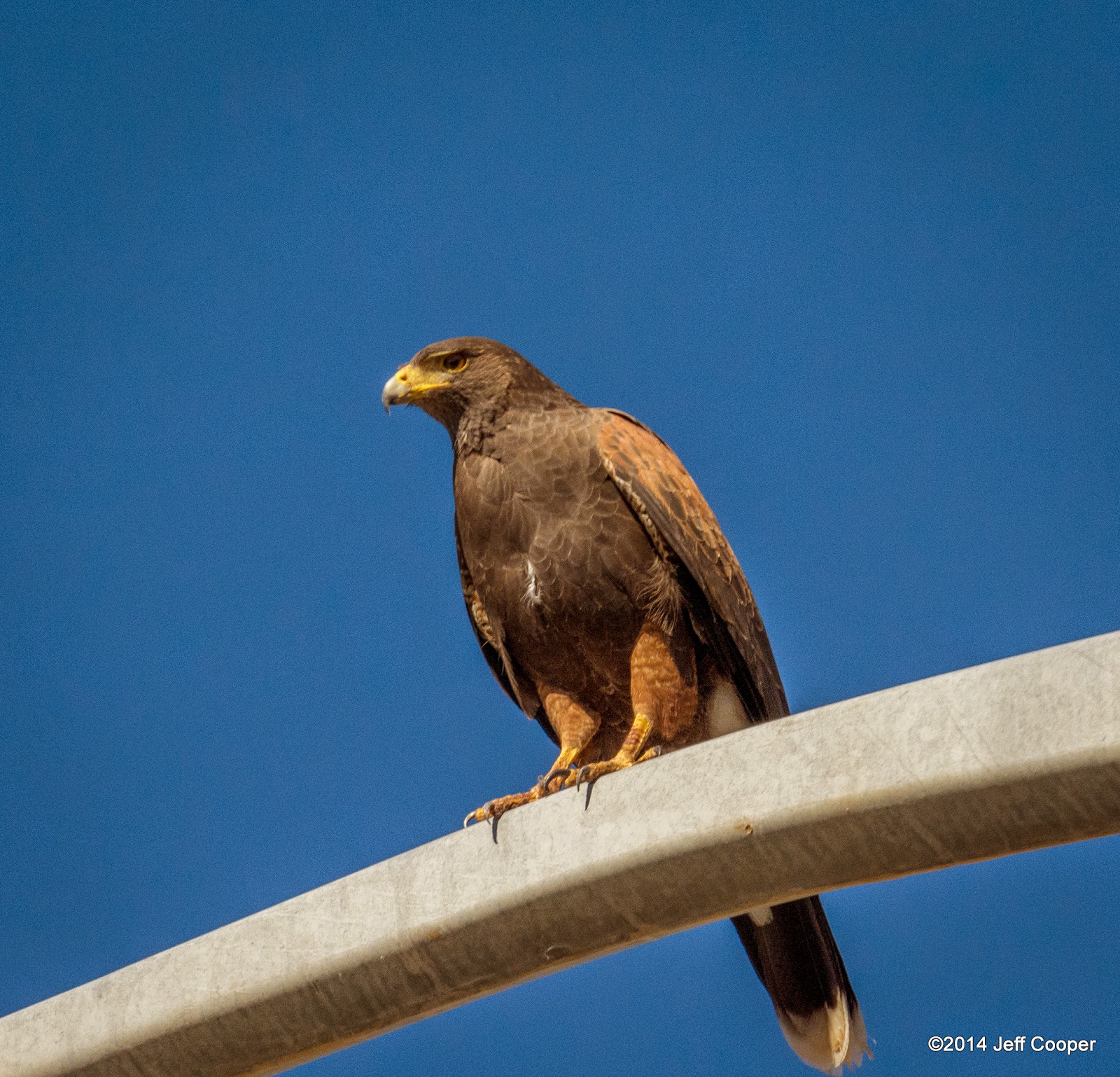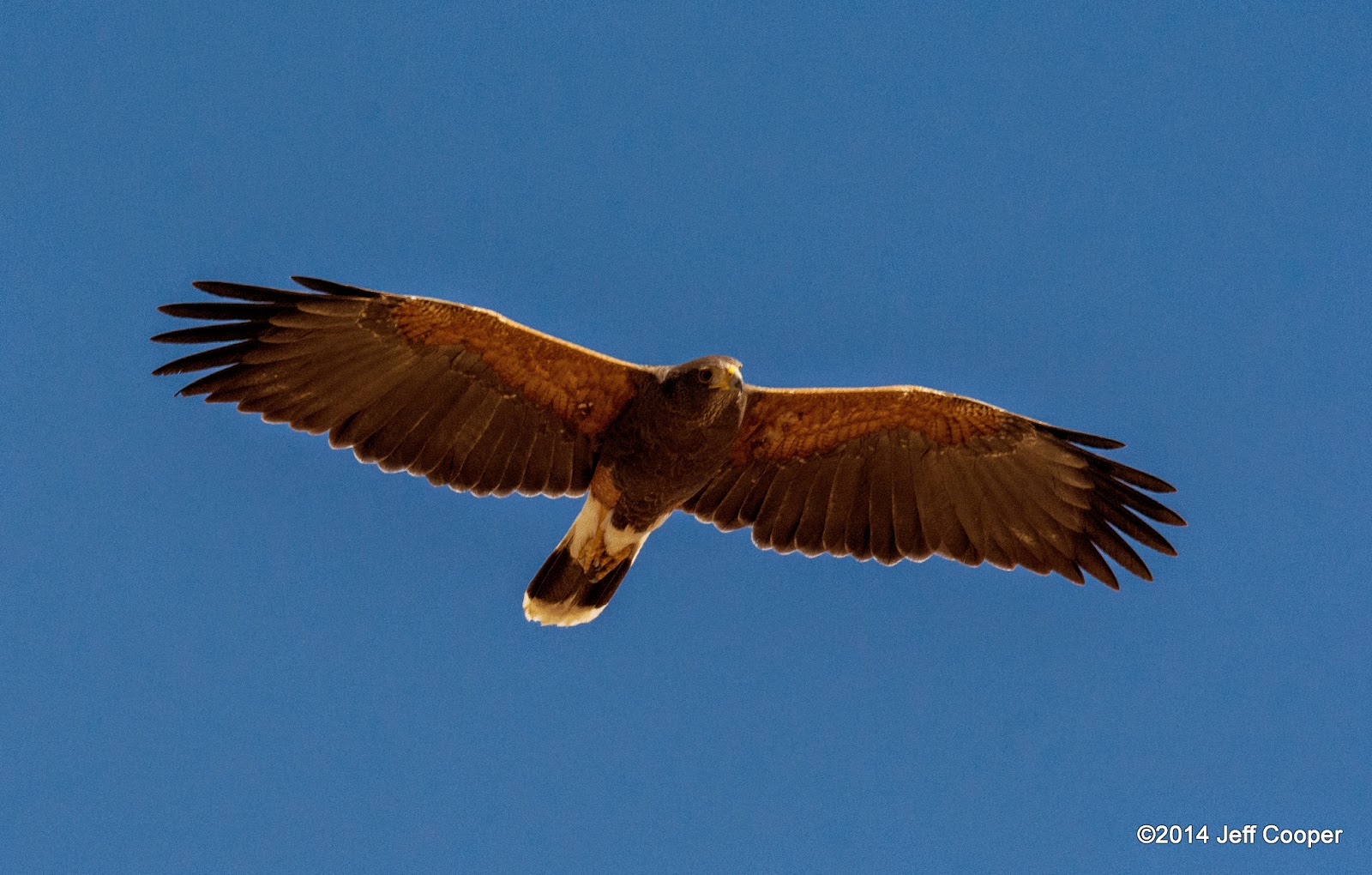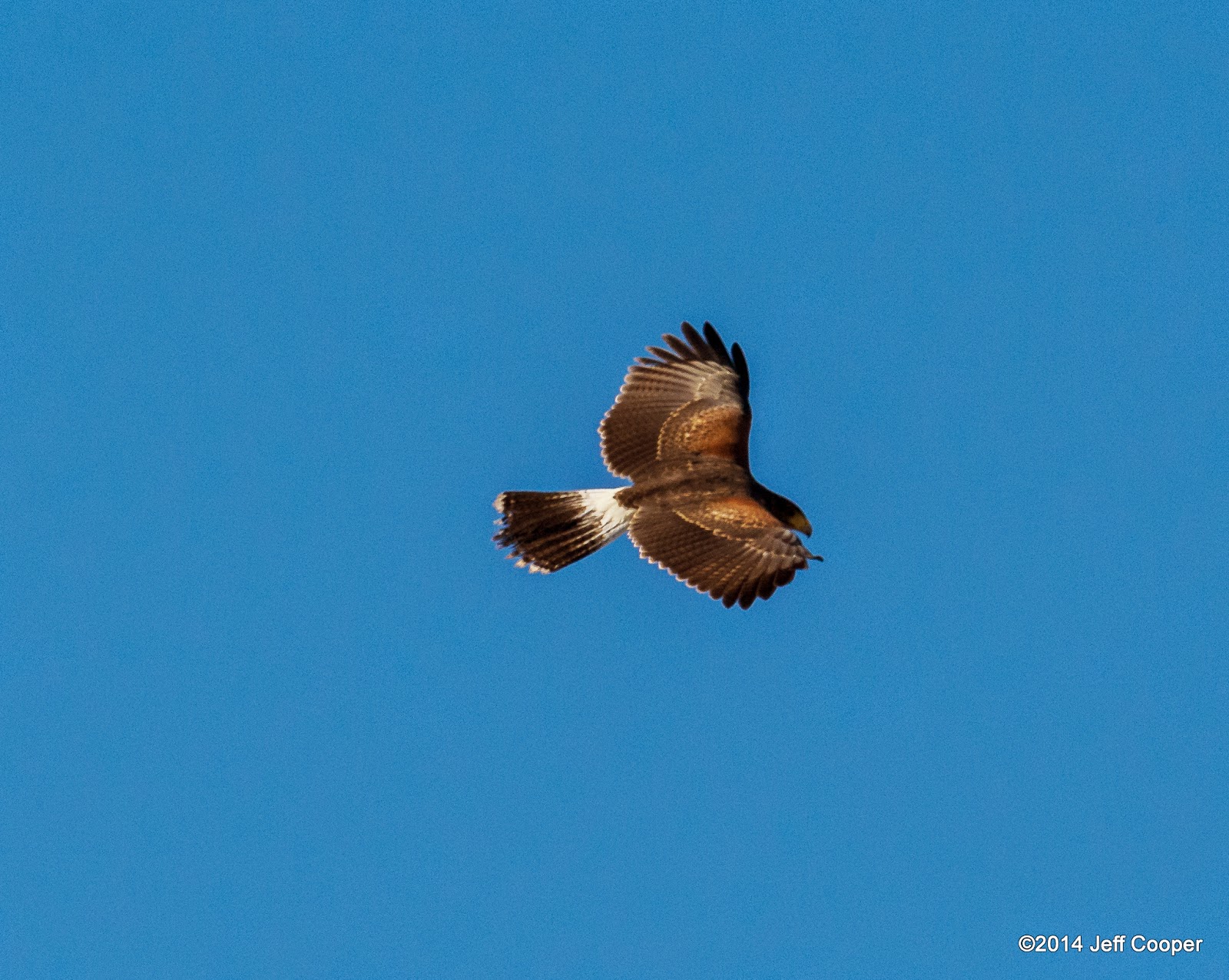My wife and I spent last weekend in the Phoenix area with our daughter and her family. We were there to celebrate my wife's birthday and do some trick or treating with our two young grandchildren. I also took some time to enjoy Arizona's Mojave Desert and attempt to accomplish one birding objective for the trip--locate and photograph a Harris's Hawk or two.
Pirates
Six weeks ago my mobile phone rang while I was having a late dinner with a birding and photography friend in St George, Utah. We had just finished a long day chasing wildlife and capturing images in the Mojave Desert of Nevada and extreme southwest Utah. I answered the phone and immediately recognized the voice of my three-year-old grandson. "Papa Jeff, do you want to be a pirate for Halloween?" How can you resist such a child-like request? He's my little buddy so we were mateys for Halloween. This little guy has accompanied me on several bird outings during my visits to the Phoenix area. He was with me when I found Black-and-white Warblers at the Riparian Preserve at Gilbert Water Ranch and when I photographed my first Costa's Hummingbird at Veteran's Oasis Park in Chandler. He really enjoys carrying my "bee-noculars" around and occasionally does his best to hold my Nikon D7100 with the 80-400mm lens on his own while capturing random, and sometimes, focused images.
Scorpions
One of my interests when I visit family in Arizona is hunting for scorpions at night. I enjoy searching for them at night because they glow a vibrant blue-green under UV light. I captured the image to the left using the camera of my Samsung Galaxy S4 phone. It didn't provide the detail I like for images, but it does illustrate the effects of UV on scorpions. I'm including the image below so you get a better look at a Bark Scorpion.
Harris's Hawks
I have been beta testing the BirdsEye Bird Finding Guide app for Android recently. I decided to test some of its functionality this past Monday before I was to head out to the airport for my flight home. I had very limited time so I needed to be very efficient if I wanted to find a hawk species in less than two hours that I hadn't encountered during numerous hours of previous Arizona bird outings. Using the app I was able to see all recent sightings and strategically select the location where I thought I'd have my best chance of success. Birds have wings and Harris's Hawks are known to be nomadic so there are no guarantees they will stay in the same place for long, especially when they are not tied down to a nesting location. I decided to head out to Lost Dutchman State Park outside of Apache Junction. That was relatively close and would give me about an hour to search after considering an hour of round trip driving time.
The State Park didn't pan out for me. Bird do have wings, remember? I had about twenty minutes to spare so I decided to drive a little farther out on Highway 88 to search the tops of every saguaro cactus and power pole I could spot while keeping an eye on the road. Luck was on my side and I soon spotted a group of five Harris's Hawks. I suspect they were a family, but this species is known to form groups that include juveniles from other adults. There were two adults and three juveniles in the group I encountered.
Harris's Hawks are very social. They are often seen in pairs or small groups, rarely as an isolated individual. They are the only raptors to hunt live prey cooperatively. They hunt like a pack of wolves, so to speak. Sometimes extended families will hunt in a coordinated effort to feed young. Some birds may attempt to flush prey from hiding while others soar above to watch for the fleeing prey. Their social nature and willingness to hunt as a team make them great falconer birds. They reside in desert areas of southern and central Arizona, southern New Mexico, and southern Texas and Mexico.
The image below shows a decent comparison of adult to juvenile when seen from below. The adult (left) has the all-dark chest with a tail that has a thick white base and tip. The juvenile is streaked on the belly and shows a barred tail on the underside. A much narrower white tip can be seen on the tail.
 |
| Harris's Hawks (adult on left, juvenile on right) Maricopa County, AZ |
 |
| Adult Harris's Hawk Maricopa County, AZ |
The chestnut colored upper wing coverts and matching leggings are classic for an adult.
 |
| Adult Harris's Hawk Maricopa County, AZ |
The next image shows a juvenile in the foreground. The tail of this bird was barred on the under side (as seen in the first image above), but the top side of the tail had a white base (hidden by the wing from this angle) and a very narrow white tip. The white tip is hard to see because of the angle and this particular bird's tail tip was very worn. While we can't see the belly of the bird in the background the broad white tail tip indicates it is an adult.
 |
| Harris's Hawks Maricopa County, AZ |
Not all juveniles show barring on the underside of the tail. The bird below shows no barring, but it is clearly a juvenile with the streaked chest and barred leggings. Compare this with the adult two images above.
 |
| Juvenile Harris's Hawk Maricopa County, AZ |
 |
| Juvenile Harris's Hawk Maricopa County, AZ |
Juveniles in flight show barred wings and a white base or panel to the primary feathers. Compare to the dark underwings of the adult that follows.
 |
| Juvenile Harris's Hawk Maricopa County, AZ |
 |
| Adult Harris's Hawk Maricopa County, AZ |
 |
| Juvenile Harris's Hawk Maricopa County, AZ |
This image illustrates how juveniles have a broad white base to the tail while the white at the tip is very limited compared to an adult.
 |
| Juvenile Harris's Hawk Maricopa County, AZ |
This juvenile has no real barring on the underside of the tail. However the limited white on the tip of the tail, the streaking on the chest, barring in the wings and leggings, and the pale base to the primary feathers all indicate juvenile.
 |
| Juvenile Harris's Hawk Maricopa County, AZ |
My first encounter with Harris's Hawks turned out to be one I'll never forget. A group of five that allowed me to study both adults and juveniles was a real treat. I think I have another favorite raptor species. Each species I encounter is unique and impressive. I can't wait to study them further during future trips to Arizona. I'd love to see their hunting behaviors, including how they are known to perch one on top of another at the top of a saguaro for a better vantage point while hunting from a perch.














Great series of photos Jeff, well done. Yes indeed Harris's Hawks are a very interesting species. I have had 4 of them I used back in my falconry days to hunt with or when I was doing bird shows up in Jackson Hole. I've got some great stories about how intelligent they are that I got to watch first hand. Again great photos!
ReplyDeleteThanks, Dickson. We need to share some of your stories next time we meet in the field. I found these hawks very fascinating and somewhat friendly.
Delete